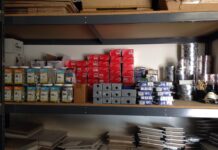Bleach is a powerful disinfectant widely used to eliminate stains, germs, and mold in bathrooms. However, its effectiveness comes with risks: using bleach incorrectly can damage surfaces and even pose health hazards. This guide clarifies when bleach is beneficial and when alternative cleaning methods are safer.
The Power of Bleach: Where It Works Best
Bleach excels at disinfecting and whitening non-porous surfaces. It’s most effective in areas prone to mold and bacteria buildup.
- Toilet Bowls: Bleach readily removes stains and restores whiteness. Squirt a small amount into the bowl, let sit for at least 10 minutes, scrub, and flush.
- Tile Grout: Diluted bleach (1 part bleach to 10 parts water) can whiten stained grout. Apply with a sponge or toothbrush, then rinse thoroughly.
- Shower Walls & Bathtubs (Non-Porous): Bleach tackles mold and mildew on smooth, sealed surfaces. Apply a diluted solution, let sit briefly, then rinse.
Surfaces to Protect: What Bleach Can Damage
While bleach is effective in certain areas, it can erode or discolor other materials. Avoid using it on:
- Natural Stone (Marble, Granite): Bleach corrodes sealants, dulling and discoloring these surfaces over time. Use mild dish soap and warm water instead.
- Metal Hardware (Faucets, Handles): Though durable, metal can corrode or scratch when exposed to bleach.
- Rubber Seals: Bleach breaks down rubber over time, damaging seals in showers and toilets.
- Porous or Colored Surfaces: Bleach leaves yellow or white splotches on wood, painted cabinets, and other porous materials.
Safety First: How to Use Bleach Correctly
To minimize risks, follow these guidelines:
- Dilution: Always dilute bleach with water (1:10 ratio).
- Protection: Wear rubber gloves and old clothes to prevent skin irritation and staining.
- Ventilation: Ensure good airflow by opening windows and doors.
- Rinsing: Rinse thoroughly after use.
- Mixing: Never mix bleach with other cleaners, especially ammonia or acids. This creates toxic gases.
- Testing: Test bleach in a small, inconspicuous area before full application.
Alternatives to Bleach
If unsure about bleach compatibility, consider these alternatives:
- Vinegar and Water: A mild, effective cleaner for many surfaces.
- Mild Detergent: Safe for general cleaning.
- pH-Neutral Surface Cleaner: Gentle yet effective for delicate materials.
Bleach remains a powerful disinfectant when used correctly. However, knowing where and how to apply it is crucial to protect your bathroom fixtures and maintain a safe cleaning environment








































